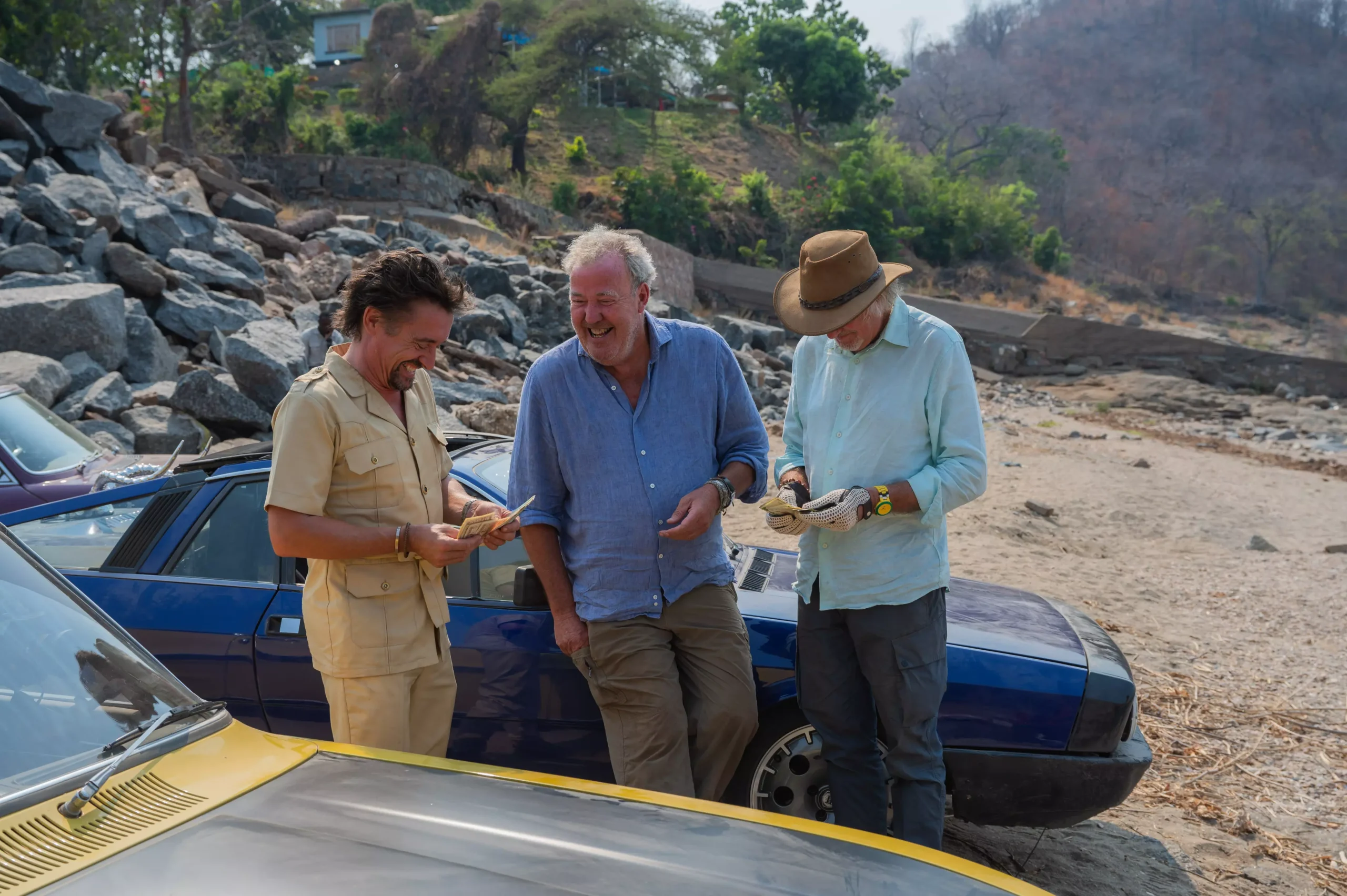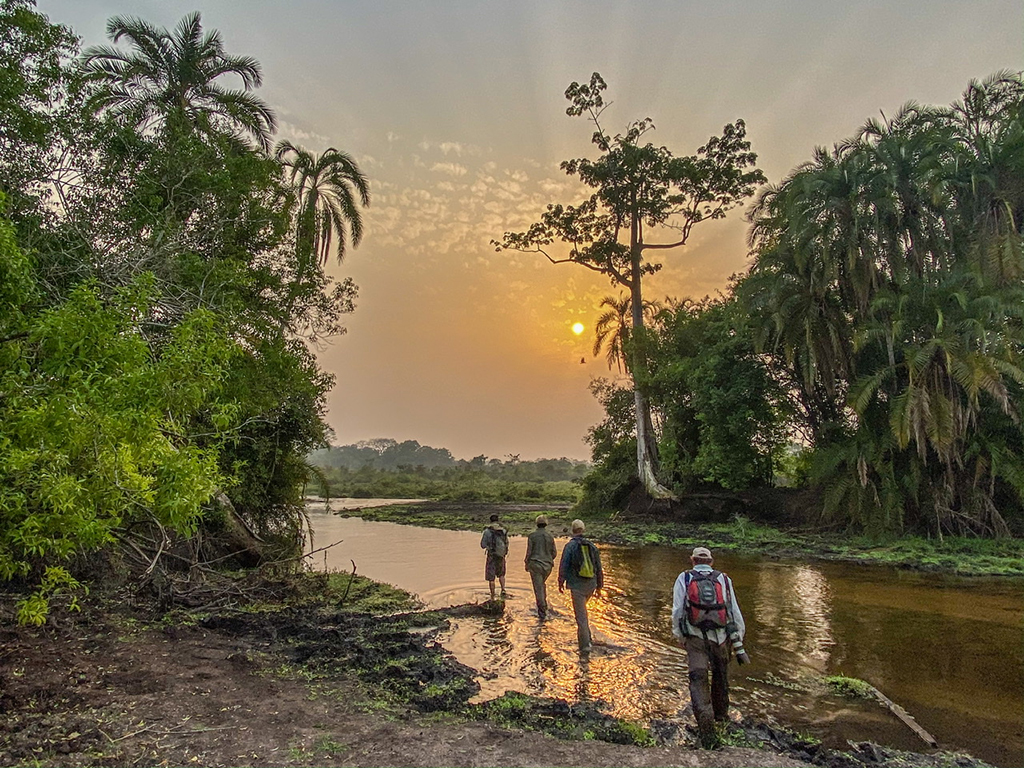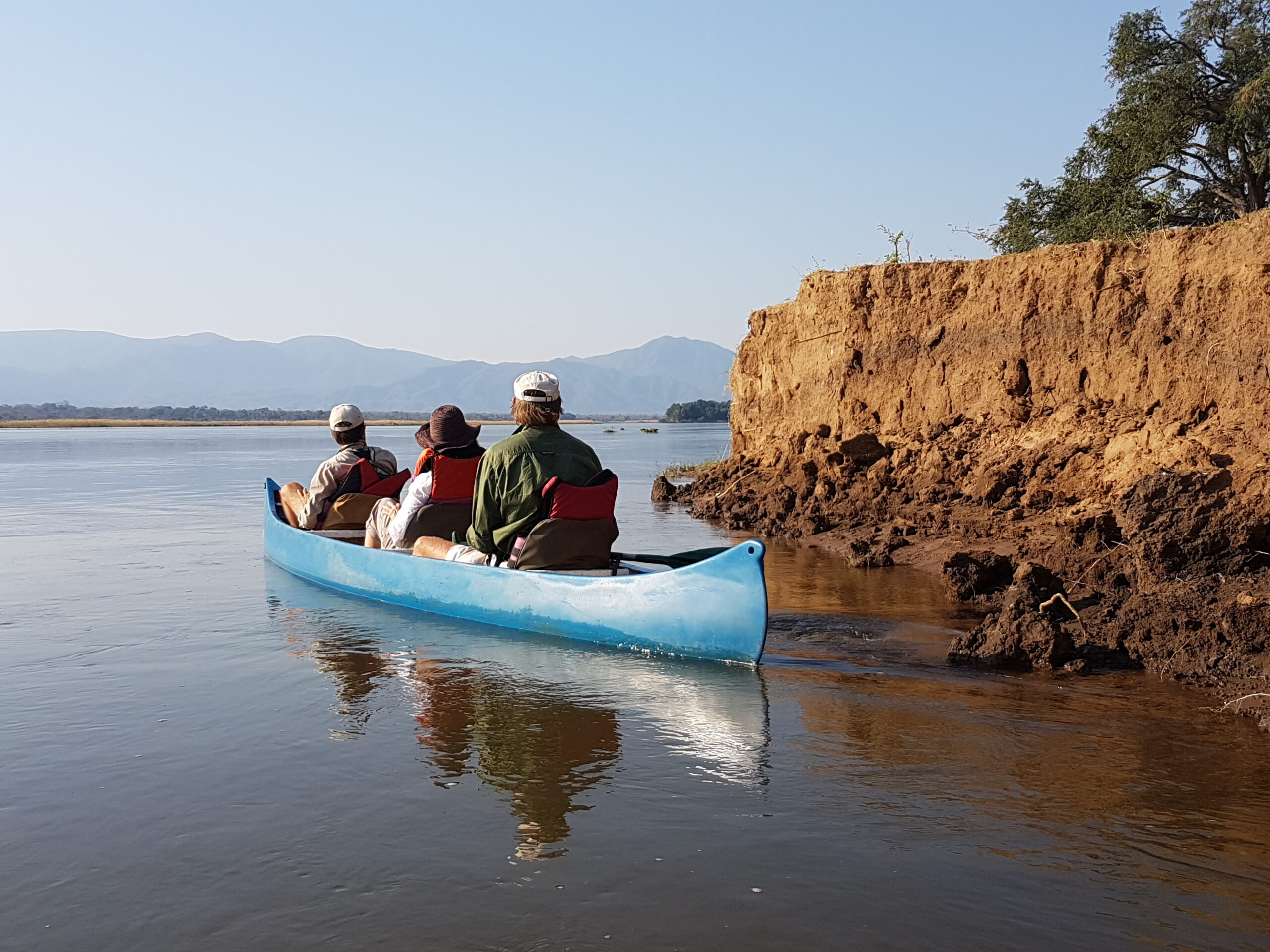

Africa is a continent of untold adventure.
Click on some of our favourite countries to see what calls to travellers.Our Little Black Book of contacts in each of these destinations ensures our guests are welcomed like family from arrival to departure.
Botswana
Landlocked Botswana is almost entirely covered by the Kalahari Desert, but it is also home to the Okavango, the world's biggest inland delta. It is blessed with both permanent and seasonal wetlands, resulting in a year-round parade of flora, fauna and wildlife.
The Okavango has been part of the Moremi Game Reserve since 1963, which has ensured a pristine environment. And the decision to limit tourism to a low-impact, high-return model has resulted in a large number of exclusive camps and lodges with some of the highest service standards in Africa. The Delta can be explored by horseback, balloon or helicopter, but gliding down its tributaries in a traditional mokoro (dugout canoe) is possibly the most enchanting way to experience this watery wonderland.
Away from the delta, the Kalahari is home to romantic desert camps and the remote Linyanti region, where the Kwando River flows south from Angola and the Linyati River edges north to Chobe, is one of Africa’s last great wildernesses.
Ethiopia
Any expeditions to Ethiopia will satisfy passion for the rich history and complex culture of this ancient land, as well as for priceless religious and historical landmarks. The extraordinary and visually arresting Ethiopian highlands are quite unlike anything else and home to fascinating endemic animals. Ethiopia offers seasoned safari-goers a different glimpse into Africa’s ancient narrative.
Kenya
Safari is Swahili for journey, and Kenya is its spiritual home, with the open savanna, excellent wildlife and colourful culture most people dream about when they think of Africa. Kenya’s Massai Mara is the best-known national reserve in Africa, famous for the annual Great Migration of wildebeest, which is one of the continent’s most iconic sights. But there are also many far-flung and less frequented parks well worth considering such as Chyulu Hills in the heart of Massailand, or the remote Samburu National Reserve in the north.
Then there are the neighbouring rhino conservancies of Lewa and Borana in Laikipia with superb views of Mount Kenya and the chance to go on a helicopter, camel or horseback safari while based at one of East Africa’s most stunning private homes. Add to this a beautiful Indian Ocean coastline with the island of Lamu at the epicentre of Swahili culture and Kenya really has it all.
Madagascar
This magnificent island nation 250kms off the east coast of Africa is one of the most remarkable countries in the world. The vast majority of its plants and creatures do not exist anywhere else, including about 100 different species of lemur, a pre-ape of captivating beauty. It is not easy to get around, but the rewards are great, from camping in the Spiny Forest in the deep south to sailing in the forgotten Levens Archipelago in the northeast and walking in the forest reserve of Anjajavy in the north west.
The raucous capital city of Antananarivo, built on seven hills, is the former base of the country’s deposed royal family and is a fascinating mix of French, African and even Asian influences with its combination of terraced rice paddies, flower market and patisseries.
Malawi
Any trip in this part of the world will focus on Lake Malawi, the most southerly of the Great Lakes of Africa’s Rift Valley. At 100kms wide and nearly 600kms long, it is an enormous freshwater sea populated with about 1,000 species of exotic fish, many unique to the lake. Popular for post-safari beach holidays, there are some lovely places to stay both on the lake’s shores and on its islands, with scuba diving, snorkeling and kayaking all part of the deal. For such a small country, its ecological diversity is impressive, from the gentle, rolling hills and streams of the high Nyika Plateau to the savanna and woodland of the Majete Wildlife Reserve, and there are tea plantations to visit and verdant forest reserves for walkers and birders.
Mauritius
The Portuguese, Dutch, French and English all laid claim to this lovely island and it is populated with a heady ethnic mix: mosques, churches and temples all stand proud in the capital of Port Louis. This easy-going diversity is evident in the island’s superb cuisine – reminiscent of south India – and the French-based creole language spoken by the majority of its inhabitants.
It is of course known for its palm-fringed beaches and five-star hotels, and it certainly does not disappoint on that score; the gently lapping sea is indeed warm and baby blue and the sand is soft and white. But the interior of the island is well worth exploring too. Hire a car and head to the Black River Gorges in the central highlands for a hike in the forest, or to the old colonial plantation house of Eureka, to the lush Botanical Garden where young lovers stroll, or to Grand Bassin, a sacred lake in the crater of an extinct volcano where Hindu ceremonies are practiced. Safe and peaceful, Mauritius is understandably popular with both couples and families wanting to unwind after a safari.
Mozambique
Mozambique has the longest Indian Ocean coastline in Africa, stretching for an astonishing 2,600kms all the way from South Africa in the south to Tanzania in the north. The 32 islands of the Quirimbas Archipelago in the far north are as beautiful as they are remote, with a pristine marine environment and just one or two exceptional places to stay.
The small, sandy islands of the Bazaruto Archipelago further south are more accessible but no less beautiful. On the mainland you can go horse-riding at Vilanculo and, travelling a little further south, the protected San Sebastian Peninsula is wild and rugged with a couple of first-rate villas and small hotels. The country’s infrastructure does not yet support much exploration inland, although the more intrepid may consider venturing up to the Niassa Reserve near the border with Tanzania for a true wildlife experience, or to Gorongosa National Park, currently being restored to its former glory as one of Southern Africa’s most diverse wildlife reserves.
Namibia
One of the most sparsely populated countries in the world, Namibia is home to hauntingly beautiful landscapes unique in Africa. There is excellent game viewing to be had in world-famous Etosha National Park and, increasingly, in the narrow Caprivi Strip bordering Botswana, Angola and Zambia. But the focus of any trip should be the solitude and space afforded by the vast and ancient Namib Desert with the monumental red sand dunes of Sossusvlei in the south and the epic Skeleton Coast in the north, strewn with ship wrecks and whale bones and home to enormous colonies of Cape Fur Seals.
From here, travelling inland into Damaraland, dry riverbeds sustain a surprising variety of life forms, from blind moles the size of golf balls to desert-adapted lion, elephant and giraffe, hyena and jackal. The country’s long, straight roads make self-drive holidays a particularly attractive option here, and there are plenty of unpretentious guesthouses along the way. But there is little to beat the thrill of a flight over Namibia’s miraculous terrain and the number of first-rate lodges is increasing fast, even in the most remote and previously unexplored parts of the country.
Seychelles
Possibly the most beautiful island nation in the Indian Ocean, Seychelles lies 1,000 miles off the east coast of Africa and just a few degrees south of the Equator. There are a total of 115 tropical islands in the archipelago, almost all of them uninhabited and protected from development. The heavily forested main island of Mahe is the biggest and liveliest of them all with the market town of Victoria, one of the smallest capitals in the world, at its centre.
Mahe has very good beaches and excellent hotels, but Seychelles is perhaps most famous for its exclusive private-island resorts, most of which can be found on the Inner Islands surrounding the capital. The next biggest island after Mahe is laidback Praslin, and then tiny La Digue, where bicycles are the main mode of transport and the beaches are superb. Serious fishermen and scuba divers have long been drawn to Seychelles’ far-flung Outer Islands, and sailing around these coral outcrops, each one crowned with palm trees and ringed with a china-blue lagoon, is the stuff of tropical-island dreams.
South Africa
The most developed country in Africa is also its most diverse, with fantastic beaches, extraordinary mountain ranges and sophisticated cities to explore. This is where the Atlantic and Indian Oceans meet and the oldest desert in the world begins; the wildlife is superb and the infrastructure second to none. Renowned for its super-smart private game lodges in Sabi Sand, bordering the Kruger National Park, it is also home to malaria-free safaris in Madikwe Game Reserve in North West Province and the rolling hills of the Eastern Cape.
Cosmopolitan Cape Town and the vineyards of the Western Cape are easily explored by car, with the relaxed fishing village of Paternoster a little further up the west coast and the majestic sand dunes of De Hoop Nature Reserve on the east. The famous Garden Route, taking in the Indian Ocean coast and its lakes and lagoons, is one of the world’s most popular road trips, with beautiful Plettenberg Bay at its heart.
Perhaps no other country in Africa offers South Africa’s winning combination of spectacular coastline, Big Five game viewing and culture – Cape Town’s Zeitz Museum of Contemporary Art Africa is a showcase for vibrant young artists from all over the continent – as well as high standards of service and first-rate accommodation.
Tanzania
Because of the epic scale of this glorious East African country, it makes sense to choose a carefully curated itinerary rather than attempt to see everything on one trip. Most safaris begin and end in the northern frontier town of Arusha, surrounded by coffee plantations and within easy reach of Tanzania’s most famous highlights: Mount Kilimanjaro – the highest mountain the world – the great plains of the Serengeti National Park and the awe-inspiring panoramas of the Ngorongoro Crater, a World Heritage Site. Close by, but a little less conspicuous, is Lake Manyara and its famous tree-climbing lions.
Then, up in the remote western reaches of the country, there is Kavati National Park – one for purists, with only a few simple camps – and the resplendent Mahale Mountains on Lake Tanganyika, home to wild chimpanzees and one of the most beautiful national parks in Africa. The Selous Game Reserve – named after Frederick Courtney Selous, the Victorian hunter and explorer who is buried there – and Ruaha, the biggest national park in Tanzania, form a majestic southern circuit in virtually untouched wilderness.
Finally there is the Indian Ocean coast, with the spice islands of Zanzibar and Mafia set in clear, coral-fringed seas.
Zambia
The Victoria Falls – which straddles Zambia and Zimbabwe – is the highlight of any trip to this southern African gem and there are superb places to stay around the town of Livingstone, and upstream on the Zambezi River. Walking safaris in the South Luangwa National Park helped put Zambia on the safari map, and many are still run from small, family-owned camps in the area and with expert guides.
The Lower Zambezi National Park is known for its high concentration of game, including large herds of buffalo and elephant, best viewed by kayak on the shores of the wide Zambezi. Further north is Kafue National Park, the country’s biggest reserve and one of its least visited, where the vast marshlands of the Busanga Plains extend for miles and there are regular sightings of cheetah and lion.
Even more remote and unexplored is Liuwa Plain National Park, the setting for the second largest wildebeest migration in Africa and now expertly managed by African Parks, which is working closely with local communities to protect and boost its wildlife, and with excellent results.
Zimbabwe
A relatively small country with an exceptionally varied landscape, Zimbabwe has abundant wildlife and excellent lodges and camps. It is also has the best safari guides in Africa, combining astonishing knowledge with an affable camp-side manner. Victoria Falls, one of the Seven Natural Wonders of the World, should be on everyone’s list and it can easily be twinned with a traditional safari in nearby Hwange National Park, the biggest game reserve in the country.
But the slightly more adventurous could equally opt for canoe safari on the Great Zambezi followed by a houseboat cruise on beautiful Lake Kariba, stopping to watch elephants swim from shore to shore. A hike in the verdant Chimanimani Mountains on the Mozambique border could be followed by a spot of fishing at the trout-filled lakes of Nyanga National Park in the Eastern Highlands.
And there is always the possibility of a good, old-fashioned road trip with our brilliant Safari Butler, stopping anywhere your heart desires to soak up the sights and sounds of off-grid Africa.
Rwanda
Tracking mountain gorillas in the Volcanoes National Park – where the primatologist Dian Fossey did her research – is the main draw here, and it really is one of the world’s greatest wildlife experiences. A number of smart new lodges have opened near Volcanoes in recent years, and other national parks have been created or rehabilitated to capitalise on an increasing interest in visiting the country.
The lush Nyungwe Forest National Park down in the south is a stunning reserve with 13 primate species – including chimpanzees and colobus monkeys – and the 100,000-hectare Akagera National Park on the border with Tanzania is one Africa’s oldest parks, currently managed by African Parks and in the process of being restored and restocked with endemic wildlife.
Here you will find open savannah plains, woodlands and lakes; the park has a large concentration of hippos and lion and rhino have already been reintroduced. Although still in its infancy, the project is proving hugely successful and is another very good reason to extend any stay in Rwanda.
The Latest from Instagram








